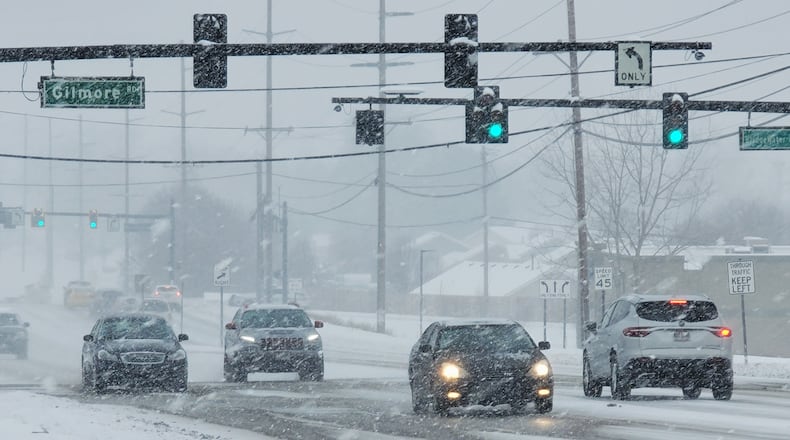If you have a wood-burning fireplace, have a good supply of easily accessible wood. Also, don’t forget to have your chimney cleaned to avoid chimney fires that can result from creosote buildup. If you use a heater inside, make sure it is well-ventilated and away from flammable objects. Some winter-related deaths each year are blamed on auxiliary heaters.
Outside, make sure dead branches on trees near your home have been removed, because they can easily come down with heavy snow or ice, especially on windy days. Clean your gutters because clogged snow and ice can build up in them quickly. When water thaws and refreezes, it can work up under the roof, which can cause water damage to walls and ceilings.
Credit: DaytonDailyNews
Next, prepare your vehicles. Check tire tread and pressure, radiator and hoses. Make sure that the antifreeze level is correct and that windshield wipers and washer fluid are ready for the winter. Keep an extra jug of washer fluid in your vehicle.
An emergency kit for your vehicle is a good idea, too. It should include jumper cables, flares, a good ice scraper and brush, a shovel, sand for tire traction and a blanket.
When the really cold weather comes, keep your gas tank at least half full to avoid fuel line freezing nd to add weight for tire traction. Clean snow off windows, roof, hood and lights to help with visibility when driving.
And this is crucial: Give yourself extra time when roads are bad, and leave extra room between you and the vehicle in front of you. In snow and ice, stopping distances are much greater than on dry roads. About 70 percent of all winter deaths occur in vehicles, but many could be avoided by just being careful.
